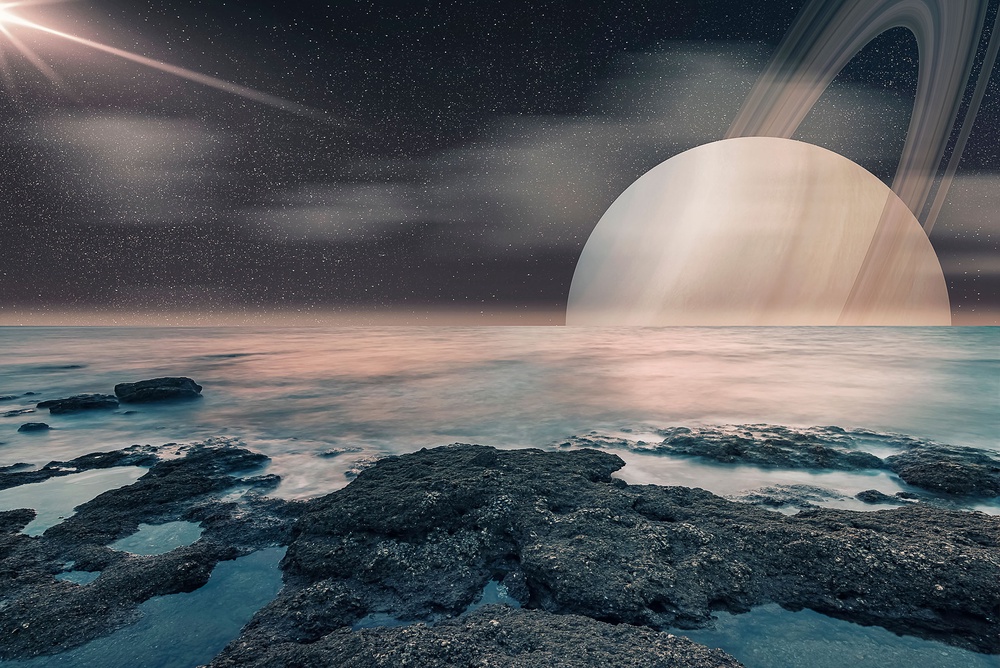Titan’s floating “magic islands” have been solved by scientists. These bright spots in Titan’s methane lakes, discovered by Cassini-Huygens in 2014, have puzzled researchers for nearly a decade. A new Geophysical Research Letters study shows these floating islands are honeycomb-shaped glacier-like snow deposits.

‘Magic Islands’ Revealed as Biological Snow Clusters Floating on Methane Lakes
This study argues that Titan’s methane lakes contain biological islands, contrary to existing beliefs. Snow-like particles grow on lakes and sink into methane, producing floating islands.
The researchers believe these clusters are huge and porous, letting methane and ethane slowly in. Islands float for a long time before sinking into methane due to slow seepage.
To understand Titan’s enchanted islands, scientists compare them to Earth’s glaciers fracturing and drifting away before sinking. This discovery explains Titan’s Earth-like structures. Titan, larger than Mercury and orbited by Cassini, has interesting brilliant patches.
READ ALSO: Aditya L1: Unlocking Insights into Space Weather
Titan’s Floating Islands
Initial assumptions that solids on Titan’s methane lakes would sink instantaneously are challenged by the investigation. Because the aggregates are porous, they seep slowly, extending floating time. This discovery clarifies Titan’s mystical islands and their intricate dynamics.
Titan’s floating islands are snow formations, which reveal more of the mystery moon’s fascinating features.




